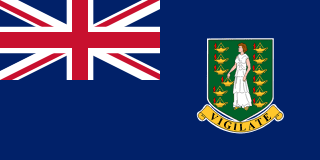British Virgin Islands - Geography

Here, let us take a look at the Geography of British Virgin Islands. Strong ties to nearby US Virgin Islands and Puerto Rico. Mother's mean age at first birth is (), whereas, the Maternal mortality ratio is
Geographical data of British Virgin Islands
| Location | Caribbean, between the Caribbean Sea and the North Atlantic Ocean, east of Puerto Rico |
|---|---|
| Geographic coordinates | 18 30 N, 64 30 W |
| Map references | Central America and the Caribbean |
| Tarrain | coral islands relatively flat; volcanic islands steep, hilly |
| Natural Resources | NEGL; pleasant climate, beaches foster tourism |
| Natural Hazards | hurricanes and tropical storms (July to October) |
| Irrigated Land | NA |
| Major rivers (by length in km) | |
| Major aquifers | |
| Land Boundaries | 0 km |
| Border Countries | |
| Coastline | 80 km |
| Climate | subtropical; humid; temperatures moderated by trade winds |
| Area | |
| Total Area | |
| Land Area | 151 sq km |
| Water Area | 0 sq km |
| comparative Area | about 0.9 times the size of Washington, D.C. |
| Maritime Claims | |
| Territorial sea | 12 nm |
| Exclusive fishing zone | 200 nm |
| Elevations | |
| Highest point | Mount Sage 521 m |
| Lowest point | Caribbean Sea 0 m |
| Land Use | |
| Agricultural land | 46.7% (2023 est.) |
| Agricultural land: arable land | arable land: 6.7% (2023 est.) |
| Agricultural land: permanent crops | permanent crops: 6.7% (2023 est.) |
| Agricultural land: permanent pasture | permanent pasture: 33.3% (2023 est.) |
| Forest | 66.5% (2023 est.) |
| Other | 0% (2023 est.) |
Population Distribution
A fairly even distribution throughout the inhabited islands, with the largest islands of Tortola, Anegada, Virgin Gorda, and Jost Van Dyke having the largest populations
People and Society
In British Virgin Islands, the different Ethnic groups are such that we have: African/Black 76.3%, Latino 5.5%, White 5.4%, mixed 5.3%, Indian 2.1%, East Indian 1.6%, other 3%, unspecified 0.8% (2010 est.)
| Population | |
|---|---|
| Pop growth rate | 1.82% (2024 est.) |
| Birth rate | 10.9 births/1,000 population (2024 est.) |
| Death rate | 5.5 deaths/1,000 population (2024 est.) |
| Health expenditure | |
| Physicians Density | |
| Hospital bed Density | |
| Total fertility rate | 1.38 children born/woman (2024 est.) |
| Gross reproduction rate | 0.67 (2024 est.) |
| Contraceptive prevalence rate | |
| Est married women (ages 15-49) | 46.6% (2023 est.) |
| Literacy | |
| Education expenditures | |
| Net Migration rate | 12.9 migrant(s)/1,000 population (2024 est.) |
| Nationality | British Virgin Islander | British Virgin Islander(s) |
| Languages | English (official), Virgin Islands Creole |
| Religions | Protestant 70.2% (Methodist 17.6%, Church of God 10.4%, Anglican 9.5%, Seventh Day Adventist 9.0%, Pentecostal 8.2%, Baptist 7.4%, New Testament Church of God 6.9%, other Protestant 1.2%), Roman Catholic 8.9%, Jehovah's Witness 2.5%, Hindu 1.9%, other 6.2%, none 7.9%, unspecified 2.4% (2010 est.) |
| Age Structure | |
| 0-14 years | 16.6% (male 3,298/female 3,351) |
| 15-64 years | 71.3% (male 13,455/female 15,152) |
| 65 years and over | 12.1% (2024 est.) (male 2,289/female 2,557) |
| Dependency Ratios | |
| Total dependency ratio | 40.2 (2024 est.) |
| Youth dependency ratio | 23.2 (2024 est.) |
| Elderly dependency ratio | 16.9 (2024 est.) |
| Potential support ratio | 5.9 (2024 est.) |
| Median Age | |
| Total | 38.5 years (2024 est.) |
| Male | 38.1 years |
| Female | 38.9 years |
| Urbanization | |
| Urban population | 49.7% of total population (2023) |
| Rate of urbanization | 1.73% annual rate of change (2020-25 est.) |
| Major urban areas (Pop) | 15,000 ROAD TOWN (capital) (2018). |
| Sex Ratio | |
| At birth | 1.05 male(s)/female |
| 0-14 years | 0.98 male(s)/female |
| 15-64 years | 0.89 male(s)/female |
| 65 years and over | 0.9 male(s)/female |
| Total population | 0.9 male(s)/female (2024 est.) |
| Infant Motality | |
| Total | 13.4 deaths/1,000 live births (2024 est.) |
| Male | 16 deaths/1,000 live births |
| Female | 10.7 deaths/1,000 live births |
| Life Expectancy at birth | |
| Total population | 80.1 years (2024 est.) |
| Male | 78.6 years |
| Female | 81.7 years |
| Drinking Water Sources | |
| Improved: total | total: 99.9% of population (2022 est.) |
| Unimproved: total | total: 0.1% of population (2022 est.) |
Demographic profile
All Important Facts about British Virgin Islands
Want to know more about British Virgin Islands? Check all different factbooks for British Virgin Islands below.
-
 British Virgin Islands Factbook
British Virgin Islands Factbook
-
 The Economy of British Virgin Islands
The Economy of British Virgin Islands
-
 Learn about the Government of British Virgin Islands
Learn about the Government of British Virgin Islands
-
 Communication in British Virgin Islands
Communication in British Virgin Islands
-
 Popular Universities in British Virgin Islands
Popular Universities in British Virgin Islands
-
 Enerny in British Virgin Islands
Enerny in British Virgin Islands
-
 Transport in British Virgin Islands
Transport in British Virgin Islands
-
 The Geography and society of British Virgin Islands
The Geography and society of British Virgin Islands
-
 The Environment of British Virgin Islands
The Environment of British Virgin Islands
-
 Military and security in British Virgin Islands
Military and security in British Virgin Islands